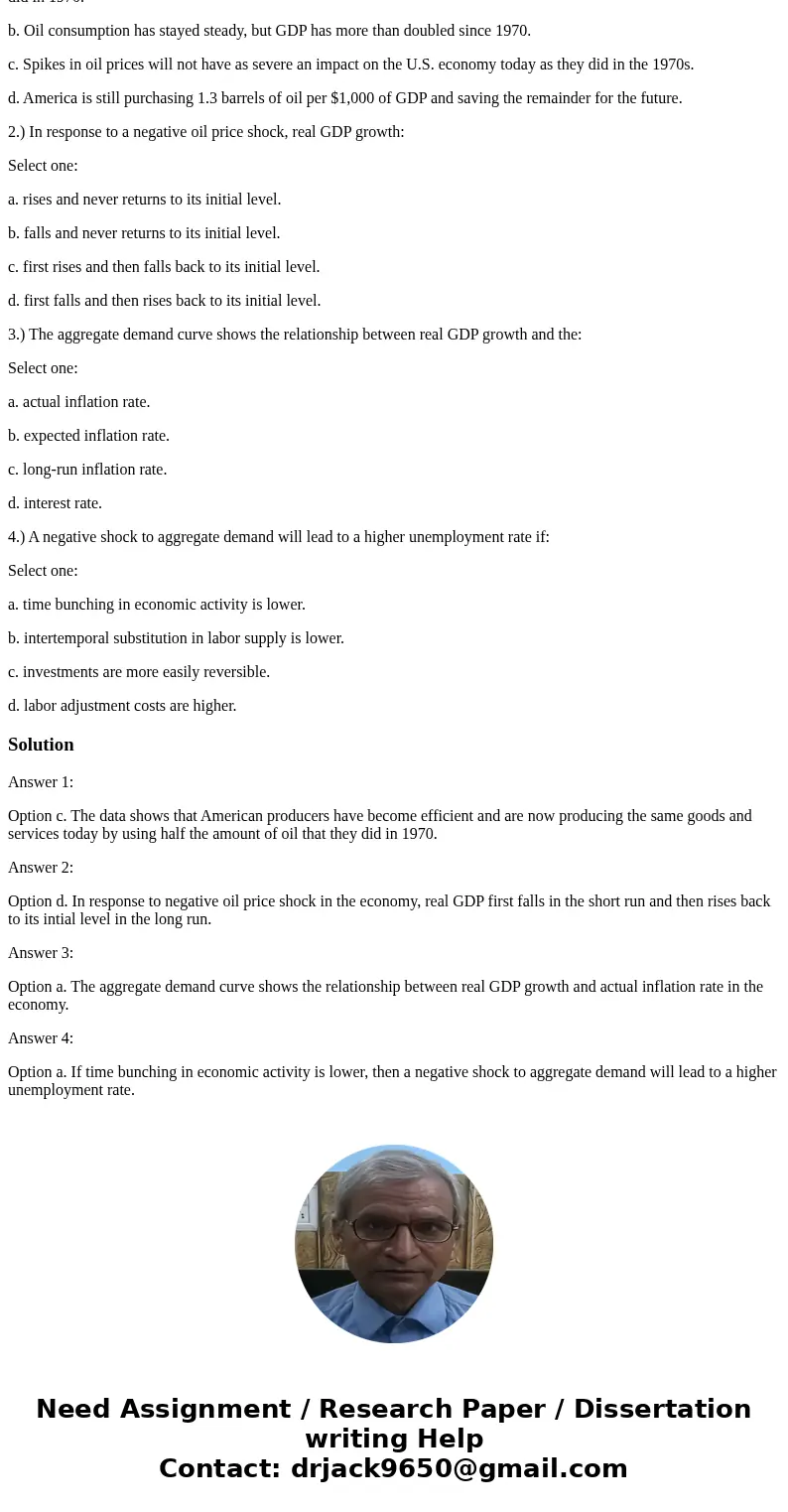1 In 1970 13 barrels of oil produced 1000 of GDP In 2004 it
1.) In 1970, 1.3 barrels of oil produced $1,000 of GDP. In 2004, it took only 0.64 barrels of oil. What implications does this have for economic fluctuations in the United States today?
Select one:
a. American producers are now producing the same goods and services today by using half the amount of oil that they did in 1970.
b. Oil consumption has stayed steady, but GDP has more than doubled since 1970.
c. Spikes in oil prices will not have as severe an impact on the U.S. economy today as they did in the 1970s.
d. America is still purchasing 1.3 barrels of oil per $1,000 of GDP and saving the remainder for the future.
2.) In response to a negative oil price shock, real GDP growth:
Select one:
a. rises and never returns to its initial level.
b. falls and never returns to its initial level.
c. first rises and then falls back to its initial level.
d. first falls and then rises back to its initial level.
3.) The aggregate demand curve shows the relationship between real GDP growth and the:
Select one:
a. actual inflation rate.
b. expected inflation rate.
c. long-run inflation rate.
d. interest rate.
4.) A negative shock to aggregate demand will lead to a higher unemployment rate if:
Select one:
a. time bunching in economic activity is lower.
b. intertemporal substitution in labor supply is lower.
c. investments are more easily reversible.
d. labor adjustment costs are higher.
Solution
Answer 1:
Option c. The data shows that American producers have become efficient and are now producing the same goods and services today by using half the amount of oil that they did in 1970.
Answer 2:
Option d. In response to negative oil price shock in the economy, real GDP first falls in the short run and then rises back to its intial level in the long run.
Answer 3:
Option a. The aggregate demand curve shows the relationship between real GDP growth and actual inflation rate in the economy.
Answer 4:
Option a. If time bunching in economic activity is lower, then a negative shock to aggregate demand will lead to a higher unemployment rate.


 Homework Sourse
Homework Sourse